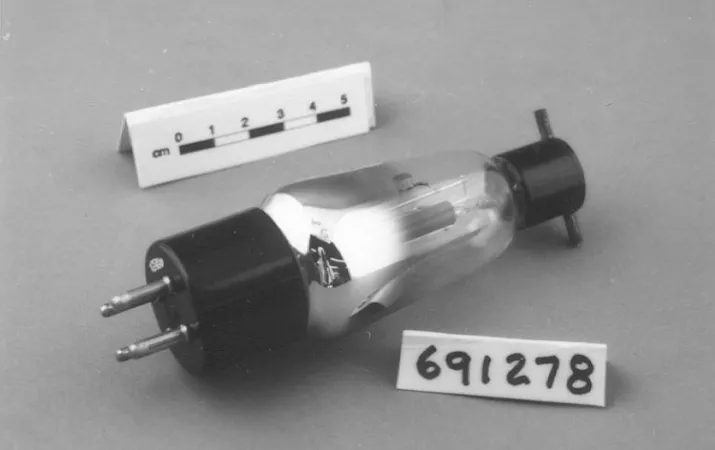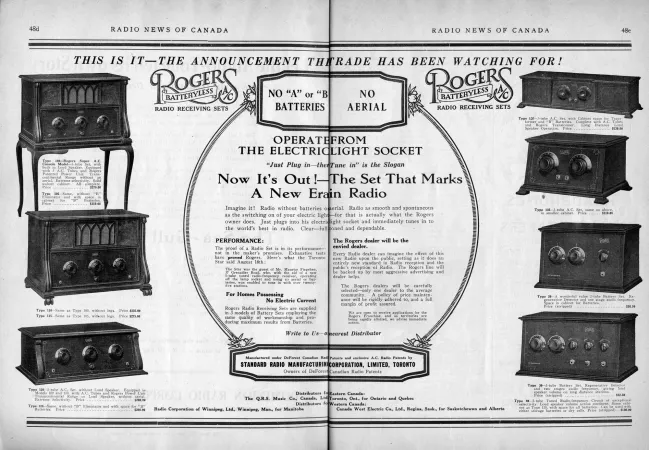Rogers Radio Receiver
This article was originally written and submitted as part of a Canada 150 Project, the Innovation Storybook, to crowdsource stories of Canadian innovation with partners across Canada. The content has since been migrated to Ingenium’s Channel, a digital hub featuring curated content related to science, technology and innovation.
When it was launched in Canada in 1925, the Rogers “Battery Less” radio receiver transformed radio listening. Instead of using heavy batteries, the radio drew power from an alternating current (AC) power source, the first radio to successfully do so. This switch became possible when Edward (Ted) Rogers Sr of Toronto perfected a vacuum tube that could run on a home’s AC electrical system. Rogers’s tube produced a clean sound and it also eliminated complicated wiring and potential leaks from the several batteries then required to power radios. Rogers’s company, the Standard Radio Manufacturing Corporation, successfully marketed battery-less radios to North Americans; Rogers’s success later inspired his son Ted Jr, who began his own telecommunications empire in the 1950s.
Rogers worked as a radio officer on Great Lakes passenger ships during the four summers of 1916 to 1919; he founded Toronto radio station CFRB in 1927.



























